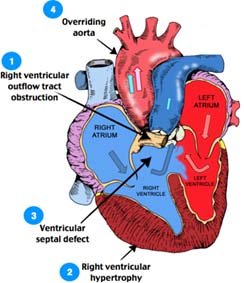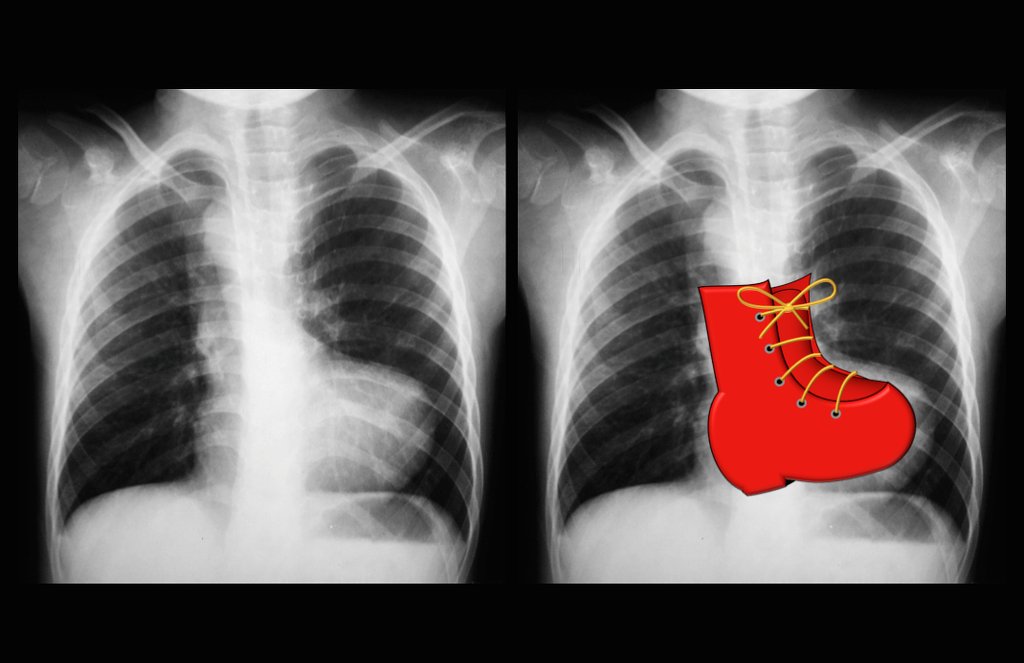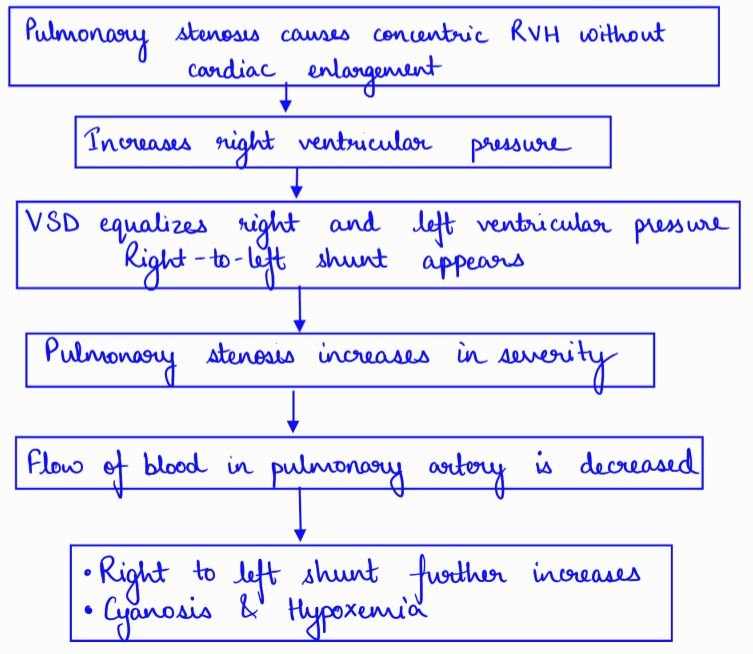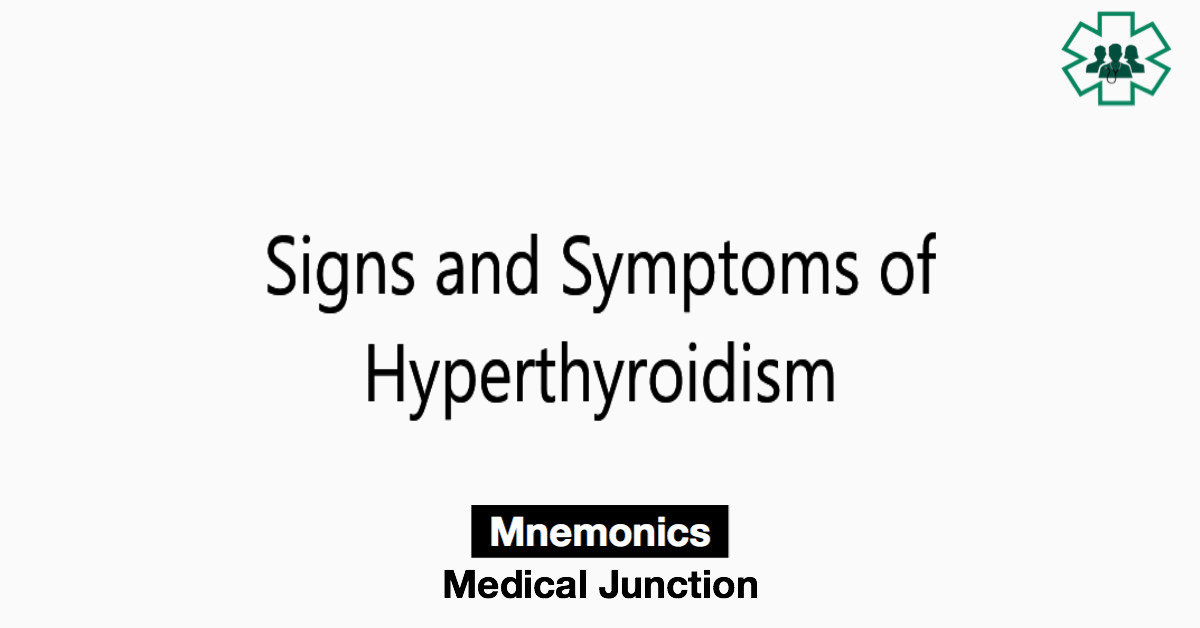Consists of a triad of
- Ventricular Septal Defect as large as aortic value annulus
- Overriding of aorta
- Right ventricular outflow tract obstruction / Pulmonary Stenosis
- Right ventricular hypertrophy

Clinical Presentation
- Symptoms develop anytime after birth
- Clubbing and Cyanosis
- Mild ( RVOT ) obstruction – Presents with an isolated murmur ( Pink tetralogy )
- Severe obstruction –
- Presents with cyanosis, a prominent parasternal heave
- S2 – late and soft P2 ( inaudible), A2 is the single and audible sound
Cyanotic spells
- Dyspnea on exertion ( like excessive crying ) or in morning
- The toddlers assume a squatting position after physical exertion
- Child starts crying → Becomes more hyperpnoeic → Cyanosis deepens ( child becomes bluer ) → Syncope → Severe spells may lead to convulsions

Physical Examination
- Cyanosis and Clubbing present
- Slight prominent a waves in JVP
- Normal S1, Single S2 heard
- Ejection systolic murmur
Investigations
ECG
- RVH and Right axis deviation
- T waves are usually inverted
- P pulmonale may be present
Chest X ray – Boot shaped heart

For confirmation – ECHO, Cardiac catheterization in specific cases
Hemodynamics

Complications
- Pulmonary stenosis becomes severe with age
- Dyspnea and increasing exercise intolerance.
- Anemia
- Cardiac enlargement & congestive cardiac failure
- Patients prone to infective endocarditis
- Anoxic infarction in the central nervous system occurs leading to hemiplegia
- Hemiplegia can also occur due to paradoxical embolism to CNS and venous thrombosis
- Brain abscess
- Congested retina and papilledema
Treatment
For cyanotic spells –
- Oral Propranolol ( 0.5 – 1.5 mg / kg / dose)
- Iron supplementation
Surgery
Definitive
- Closure of VSD and relief of pulmonary stenosis
- Relief involves placement of transannular patch across the pulmonary value
Palliative
- Blalock- Taussig Shunt – Subclavian artery- pulmonary artery anastomosis using a Goretex graft
- Alternatives – Balloon dilatation of the pulmonary value or stenting of patent arterial duct







Thanks for alot information